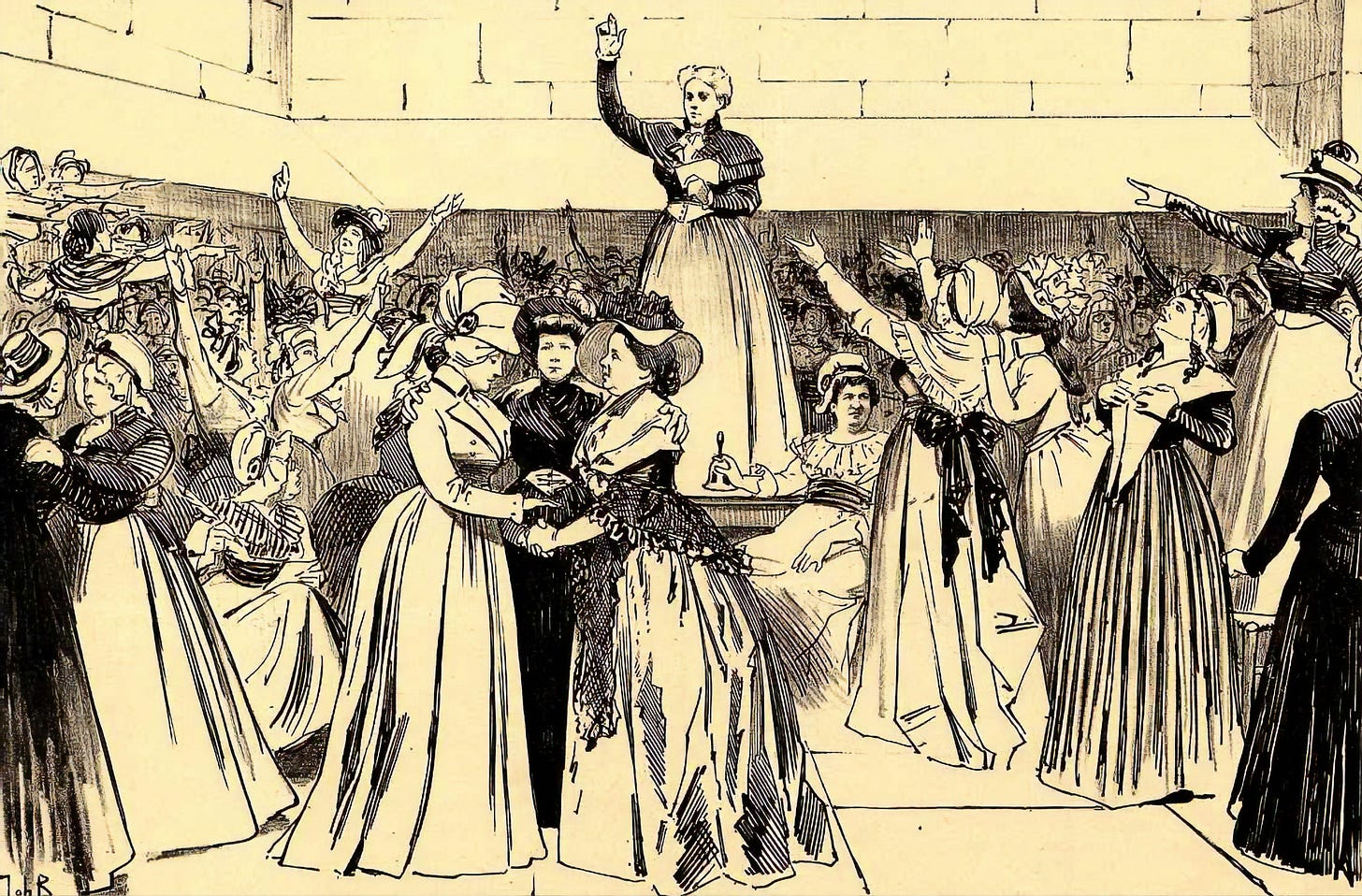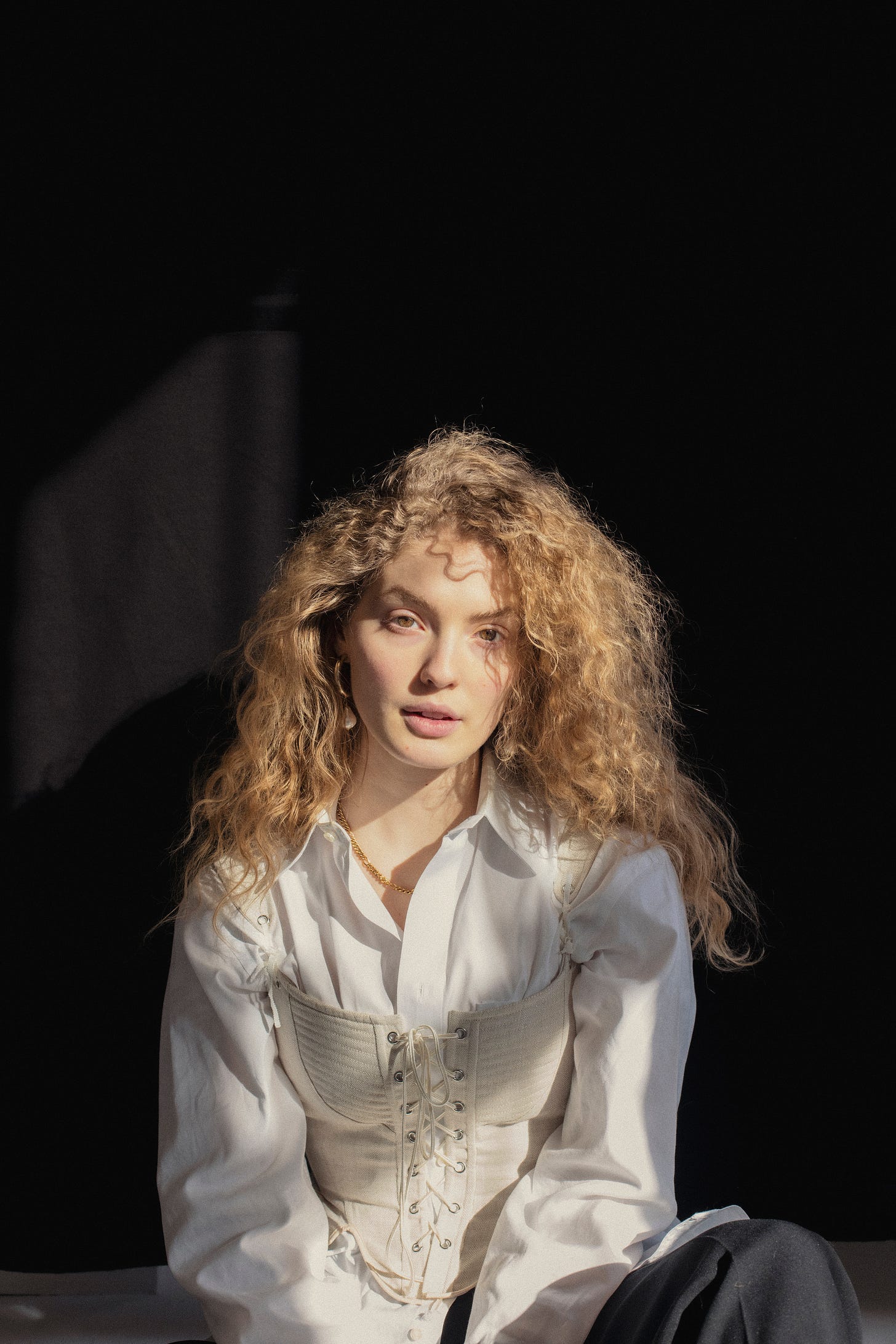Today’s college starter pack consists of two essential clothing items: frat shoes and the Urban Outfitters lace corset. With the garment’s recent rise in popularity, it is interesting to look back at its evolution– the controversial role the corset played in history and the paradox it represents as both a symbol of feminism and patriarchy.
The French term “corset” first became popular in 16th century Europe to give the illusion of a smaller waist and emphasized chest– a naturally unattainable figure, yet the ideal body standard at that time. The garment was also a status symbol. Constraining the wearer’s mobility suggested that an individual had servants loyal to them. They were primarily worn by male and female European royalty in the Middle Ages and Renaissance era and then adopted by the bourgeoisie in the 17th century.
Moreover, the age of Enlightenment was an era of discovery and innovation, yet it was far more beneficial for men than women. It was considered taboo for men to wear corsets. Women, on the other hand, were expected to take care of their children and manage the household, while also wearing a suffocating corset at all times. Not only were their roles as mothers and housekeeping suitable for the patriarchy, but their bodies were also meant to be shaped and appealing to the male gaze.
Its lack of breathability reflected society's rigid confinement of women and their role in society. Thus, the corset displayed a paradox: it both benefited women, yet also held them back.
There were two main critics of this fashion craze: women’s rights activists and male physicians. The latter was concerned about the health risks, which ties into the misconceptions about corsets. Not all corsets were made of iron, supposedly used for “orthopedic purposes” and responsible for shifting people’s organs. There were comfortable corsets made of whalebone for everyday wear and then tighter, stiffer versions used for balls and formal affairs. Tight-lacing, which is usually recognized as body-damaging, was introduced in the 19th century with the introduction of metal eyelets, through which ribbons were laced. With further investigation, most of these health concerns were disproved.
Subtle shifts in the design throughout the 1800s reflected society’s fluctuating view of the ideal body standard. At varying points, they were shortened to attain an hourglass figure and then lengthened to attain a long and slim silhouette. With the introduction of eyelets, corsets could become increasingly tighter and benchmarks toward ‘perfection’ could be further pushed.
Nevertheless, despite these critiques, not all women viewed corsets in the same negative way. They weren’t entirely symbols of oppression as they also represented feminity and personal expression for many women. In that way, perhaps the problem was not the garment itself, but the context in which they were worn.
Society began outgrowing corsets in the 1900s as women became more active and involved in sports and exercise. At this cultural zeitgeist, breathing was deemed particularly necessary. Particularly during the first World War, women were transitioning to uniforms and wearing simpler cotton designs. Designers stopped incorporating corsets simply for practical reasons and to accommodate this cultural advancement of women.
Post-World War II, corsets became a symbol of male oppression. Besides being incorporated into Hollywood and the film industry, worn by stars like Marylin Monroe and Audrey Hepburn, they were typically inconvenient and unsuitable for the average woman. Then in 1968, corsets were one of the garments thrown into the “freedom trash can” during the noteworthy protest of Miss America pageants and the patriarchal notions of beauty they promoted.
The first modern revival was in the 70s and 80s with famous designers like Jean Paul Gaultier and Vivienne Westwood incorporating corsets into their designs. Even Madonna famously wore them throughout her Blonde Ambition tour.
Lingerie came to the forefront of feminist discourse. The decline of corsets, which restricted breathing and mobility to uphold standards of femininity, was considered a feminist victory in the 20th century. Suddenly they were being reintroduced into mainstream fashion. The major distinction, however, which deviated from its previous use was that this time, the corset was being worn as a piece of outerwear rather than underwear. The garment’s use was not to attain a certain body shape but to accent the wearer and modern designs. This reclamation of the corset served as a bold and empowering fashion statement that rebelled against its patriarchal origins.
The corset in the 21st century has resurrected and evolved into a trend worn by a variety of individuals. They range from lace to leather, garnering almost 4 billion views on Tik Tok, and giving rise to the “Regency core” aesthetic. The corset is a perfect example of how the power of fashion extends beyond clothing itself. It reflects society’s social, cultural, and economic state. One singular garment can turn a device of male oppression into a symbol of feminism, femininity, and personal expression. And most importantly, it serves as an ideal top to wear while crawling from bar to bar across the UIUC campus. If anything, sporting a feminist symbol to the patriarchally-driven fraternity perfectly represents the dichotomy of Gen Z.









So interesting reading about the corset’s history and its return more recently. It’s fascinating how its popularity among young women has increased. The article was humorous and insightful.